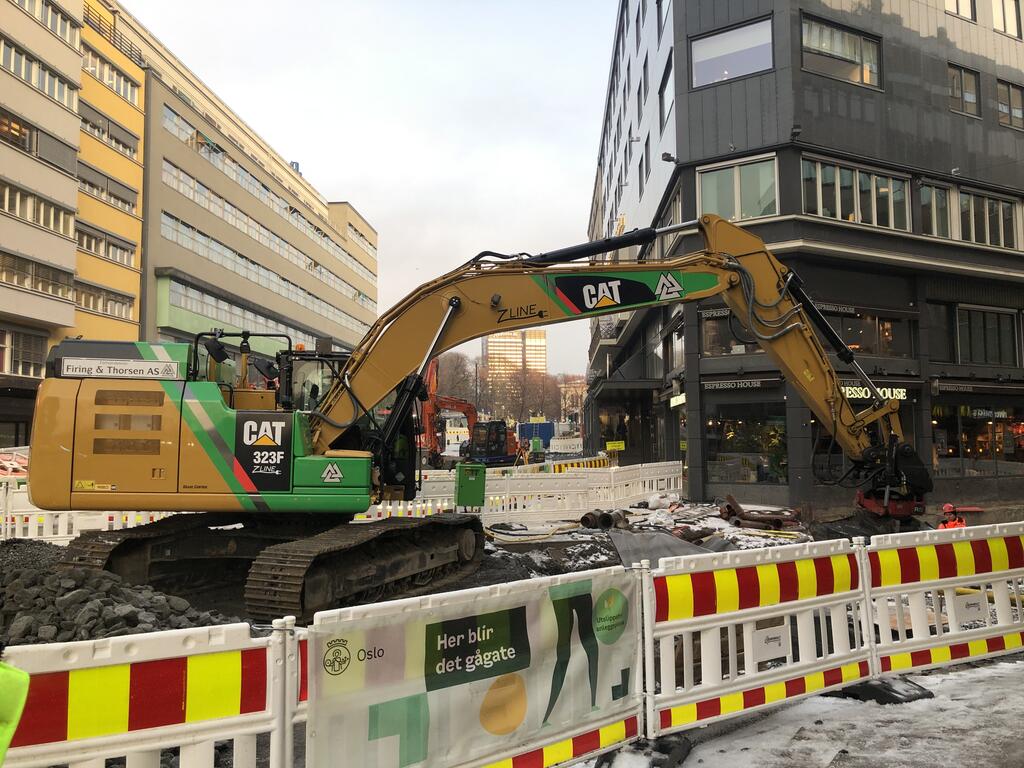Improved impact assessments towards emission-free construction logistics
In order to overcome barriers and set ambitious environmental requirements, which will enable to implement emission free construction logistics solutions, off-site and on-site construction logistics activities have to become smarter, more efficient and sustainable. In the MIMIC project a report has been conducted aiming to develop the impact assessment framework for construction logistics,

Background
There is an ongoing urbanization trend, making municipalities focus on densifying cities, hence stimulating construction and renovation works in urban areas. Urban construction intrinsically strongly relies on off-site (transport to and from construction site) and on-site (operation of construction machineries, storage and installation of materials, material and waste flows) construction logistics activities, and these in turn are the source of environmental nuisances.
For transport to and from the construction site (off-site construction logistics), these nuisances come in the form of i.a. air pollution, greenhouse gas emissions, noise pollution, congestion, accidents etc. The order of magnitude of external costs of transport in the EU equals approximately 1,000 billion euro per year, which represents about 7% of the EU28’s GDP (EC, 2018). The construction sector represents a share of about 20-35% of total freight traffic in urban areas, depending on the cases and calculation methods and variables (Brusselaers et al., 2020). However, to perform accurate external cost calculations, there is a need for accurate data to enable the consideration of significant calculation-variables, like vehicle-type, road type, traffic situation, number of receptors, etc., which are often not considered in construction logistics impact assessments so far (Brusselaers et al., 2020).
Impact assessment of construction logistics
This report is part of a deliverable under WP 2 (Impact assessment) in MIMIC project, aiming to develop the impact assessment framework for construction logistics. The report provides background information on impact assessment of off-site and on-site construction logistics activities, for which two methodologies are used: External Cost Calculations (ECC) and Life Cycle Assessment (LCA). The report presents each methodology in detail, highlighting the scope, the system boundaries, construction logistics activities and data collection plan. Furthermore, the first version of construction logistic impact assessment framework is developed. The impact assessment framework is flexible enough to cope with specific local constraints, whilst generic enough to allow comparability across the European cases, and ultimately across construction logistics globally.
“Today, we don’t have an accurate view of the actual share of construction transport in urban traffic. This has a profound impact on how we approach the sector and its environmental nuisances. By developing the presented impact assessment framework, we aim to shine a light on transport movements in the sector using robust methodologies and state-of-the-art metrics, and ultimately propose more sustainable and financially beneficial solutions to companies and local authorities.” Explains Nicolas Brusselaers, Vrije Universiteit Brussel.
GHG emissions, air pollution, nuisance, vibrations and waste generation are some examples of potential negative impacts from on-site construction logistic activities. The construction site activities alone, are estimated to represent around 5-10 % of the total GHG emissions from cities (DNV.GL. 2019). However, there is a large potential for cities to reduce their negative impacts through stronger requirements on construction logistics.
"Fossil free or emission free construction site activities in Norway are good examples, where political and active market-dialogue can help overcoming barriers and set ambitious environmental requirements which enable to implement emission free construction logistics solutions. In order to achieve these ambitions, off-site and on-site construction logistics activities have to become smarter, more efficient and sustainable. Quantitative impact assessment methods are evidently useful for assessing the performance of new and existing construction logistic solutions/setups." Says Selamawit Mamo Fufa, Sintef.
This framework will be an integral part of the SMART Governance concept aiming to assess and include sustainability decisions right from the tendering process in the construction sector, both for companies and local authorities.



